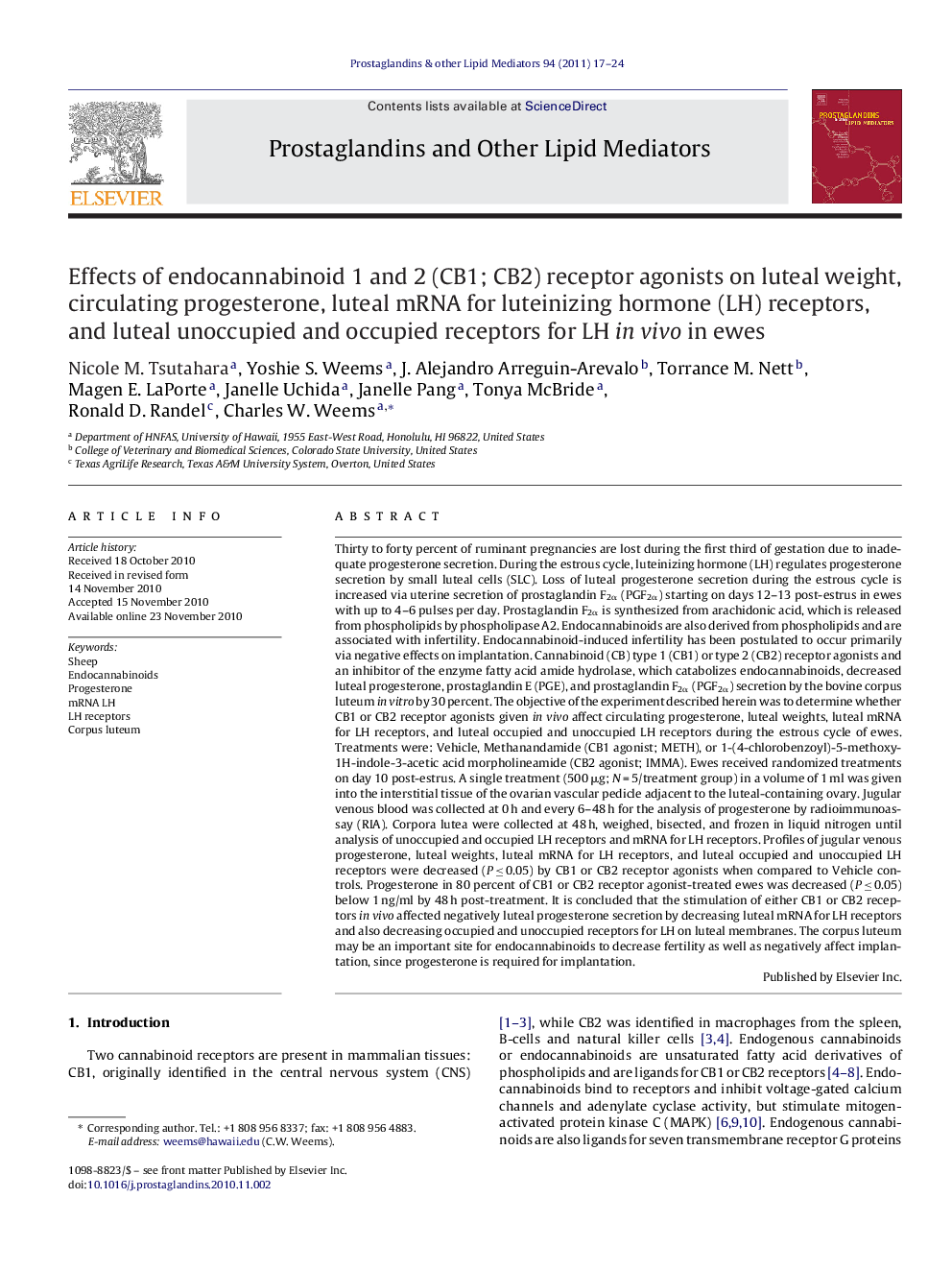| Article ID | Journal | Published Year | Pages | File Type |
|---|---|---|---|---|
| 2019830 | Prostaglandins & Other Lipid Mediators | 2011 | 8 Pages |
Thirty to forty percent of ruminant pregnancies are lost during the first third of gestation due to inadequate progesterone secretion. During the estrous cycle, luteinizing hormone (LH) regulates progesterone secretion by small luteal cells (SLC). Loss of luteal progesterone secretion during the estrous cycle is increased via uterine secretion of prostaglandin F2α (PGF2α) starting on days 12–13 post-estrus in ewes with up to 4–6 pulses per day. Prostaglandin F2α is synthesized from arachidonic acid, which is released from phospholipids by phospholipase A2. Endocannabinoids are also derived from phospholipids and are associated with infertility. Endocannabinoid-induced infertility has been postulated to occur primarily via negative effects on implantation. Cannabinoid (CB) type 1 (CB1) or type 2 (CB2) receptor agonists and an inhibitor of the enzyme fatty acid amide hydrolase, which catabolizes endocannabinoids, decreased luteal progesterone, prostaglandin E (PGE), and prostaglandin F2α (PGF2α) secretion by the bovine corpus luteum in vitro by 30 percent. The objective of the experiment described herein was to determine whether CB1 or CB2 receptor agonists given in vivo affect circulating progesterone, luteal weights, luteal mRNA for LH receptors, and luteal occupied and unoccupied LH receptors during the estrous cycle of ewes. Treatments were: Vehicle, Methanandamide (CB1 agonist; METH), or 1-(4-chlorobenzoyl)-5-methoxy-1H-indole-3-acetic acid morpholineamide (CB2 agonist; IMMA). Ewes received randomized treatments on day 10 post-estrus. A single treatment (500 μg; N = 5/treatment group) in a volume of 1 ml was given into the interstitial tissue of the ovarian vascular pedicle adjacent to the luteal-containing ovary. Jugular venous blood was collected at 0 h and every 6–48 h for the analysis of progesterone by radioimmunoassay (RIA). Corpora lutea were collected at 48 h, weighed, bisected, and frozen in liquid nitrogen until analysis of unoccupied and occupied LH receptors and mRNA for LH receptors. Profiles of jugular venous progesterone, luteal weights, luteal mRNA for LH receptors, and luteal occupied and unoccupied LH receptors were decreased (P ≤ 0.05) by CB1 or CB2 receptor agonists when compared to Vehicle controls. Progesterone in 80 percent of CB1 or CB2 receptor agonist-treated ewes was decreased (P ≤ 0.05) below 1 ng/ml by 48 h post-treatment. It is concluded that the stimulation of either CB1 or CB2 receptors in vivo affected negatively luteal progesterone secretion by decreasing luteal mRNA for LH receptors and also decreasing occupied and unoccupied receptors for LH on luteal membranes. The corpus luteum may be an important site for endocannabinoids to decrease fertility as well as negatively affect implantation, since progesterone is required for implantation.
Research highlights▶ Cannabinoid receptor agonists on ewe luteal function in vivo were investigated. ▶ CB1 or CB2 receptor agonists reduced luteal weights and circulating progesterone. ▶ CB1 or CB2 receptor agonists reduced luteal mRNA for LH receptors. ▶ CB1 or CB2 receptor agonists reduced unbound and bound luteal LH receptors. ▶ CB1 or CB2 receptor agonists are luteolytic in ewes.
